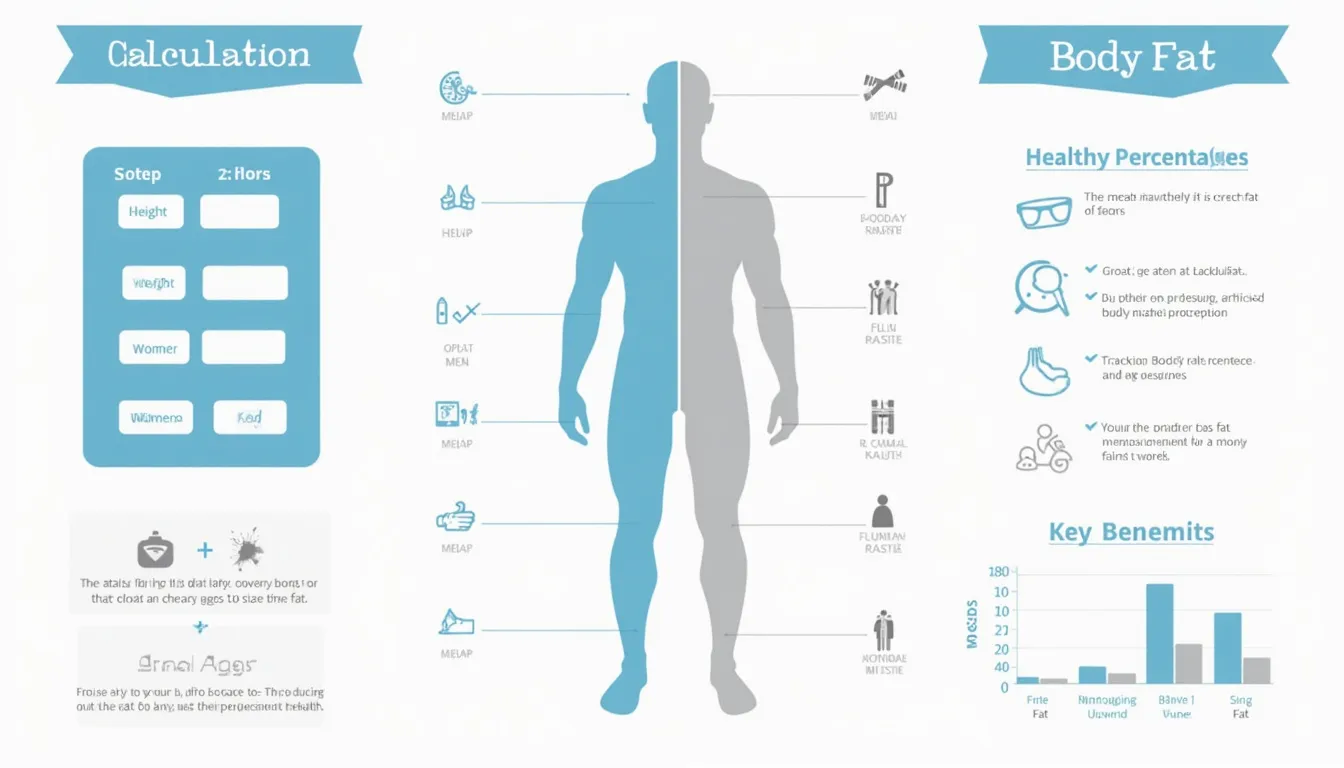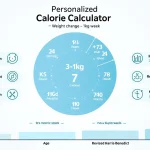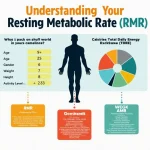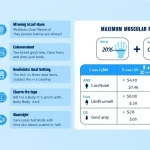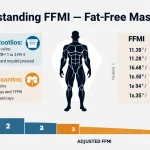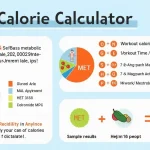Body Fat Percentage Calculator
Is this tool helpful?
Welcome to our comprehensive guide on the Body Fat Percentage Calculator, a powerful tool designed to help you accurately assess your body composition. This calculator utilizes the US Navy method, a widely recognized and reliable technique for estimating body fat percentage. Whether you’re an athlete, fitness enthusiast, or simply health-conscious, understanding your body fat percentage is crucial for monitoring your overall health and fitness progress.
How to Use the Body Fat Percentage Calculator Effectively
Using our Body Fat Percentage Calculator is straightforward and user-friendly. Follow these simple steps to get an accurate estimation of your body fat percentage:
- Select your gender: Choose between male or female in the dropdown menu.
- Enter your height: Input your height in centimeters (cm).
- Measure your waist: Measure your waist circumference at the navel level in centimeters.
- Measure your neck: Measure your neck circumference at the narrowest point in centimeters.
- For females only: Measure your hip circumference at the widest point in centimeters.
- Click “Calculate”: The calculator will instantly provide your estimated body fat percentage.
For the most accurate results, it’s recommended to take measurements in the morning before eating or drinking, and to use a flexible tape measure for consistency.
Understanding Body Fat Percentage: Definition and Importance
Body fat percentage is a measure of body composition that represents the proportion of fat tissue in relation to your total body weight. It’s a more accurate indicator of health and fitness than body weight alone or Body Mass Index (BMI), as it distinguishes between fat mass and lean body mass (muscles, bones, organs, etc.).
Knowing your body fat percentage is crucial for several reasons:
- It provides a more accurate picture of your overall health
- It helps in assessing your risk for certain health conditions
- It’s useful for tracking progress in fitness and weight loss programs
- It can guide nutritional and exercise strategies
- It’s important for athletes in weight-class sports
The Science Behind the Body Fat Percentage Calculator
Our Body Fat Percentage Calculator uses the US Navy method, which is based on circumference measurements and height. This method has been validated against more advanced techniques like hydrostatic weighing and is known for its accuracy and ease of use.
The formulas used in the calculator are as follows:
For Men:
$$ \text{Body Fat \%} = 495 / (1.0324 – 0.19077 \times \log_{10}(\text{waist} – \text{neck}) + 0.15456 \times \log_{10}(\text{height})) – 450 $$For Women:
$$ \text{Body Fat \%} = 495 / (1.29579 – 0.35004 \times \log_{10}(\text{waist} + \text{hip} – \text{neck}) + 0.22100 \times \log_{10}(\text{height})) – 450 $$These formulas take into account the differences in body composition between men and women, providing tailored results based on gender-specific measurements.
Benefits of Using the Body Fat Percentage Calculator
Our Body Fat Percentage Calculator offers numerous benefits for individuals looking to improve their health and fitness:
- Accuracy: It provides a more accurate assessment of body composition compared to BMI or weight alone.
- Convenience: You can easily measure your body fat percentage at home without expensive equipment.
- Progress Tracking: Regular use allows you to monitor changes in your body composition over time.
- Goal Setting: It helps in setting realistic fitness goals based on your current body fat percentage.
- Health Awareness: Understanding your body fat percentage can motivate healthier lifestyle choices.
- Customized Fitness Plans: The results can guide the development of personalized exercise and nutrition plans.
- Risk Assessment: It aids in assessing the risk of obesity-related health issues.
How the Body Fat Percentage Calculator Addresses User Needs
Our calculator addresses several key user needs and solves specific problems related to body composition assessment:
1. Overcoming BMI Limitations
While BMI is widely used, it doesn’t distinguish between muscle mass and fat mass. Our Body Fat Percentage Calculator provides a more nuanced view of body composition, which is particularly beneficial for athletes or individuals with high muscle mass who might be incorrectly classified as overweight or obese by BMI standards.
2. Accessible and Cost-Effective Measurement
Professional body fat measurement techniques like DEXA scans or hydrostatic weighing are accurate but expensive and not readily accessible. Our calculator offers a free, easily accessible alternative that provides reliable estimates based on simple measurements you can take at home.
3. Personalized Health Insights
By providing gender-specific calculations, our tool offers personalized insights into your body composition. This tailored approach acknowledges the physiological differences between men and women, resulting in more accurate and relevant results.
4. Progress Monitoring
For individuals on a fitness or weight loss journey, our calculator serves as an excellent tool for tracking progress. By regularly inputting measurements, users can observe changes in their body fat percentage over time, providing motivation and helping to adjust strategies as needed.
5. Health Risk Assessment
Excess body fat, especially visceral fat around the waist, is associated with various health risks. Our calculator helps users understand their current body fat levels, potentially alerting them to health risks and encouraging preventive measures.
Practical Applications and Examples
To illustrate the practical applications of our Body Fat Percentage Calculator, let’s consider a few examples:
Example 1: Fitness Enthusiast
Sarah, a 30-year-old woman, has been working out regularly for six months. Her measurements are:
- Height: 165 cm
- Waist: 70 cm
- Neck: 32 cm
- Hip: 95 cm
Using our calculator, Sarah’s body fat percentage is estimated at 23.8%. This falls within the “fitness” range for women her age, indicating that her exercise routine is effective in maintaining a healthy body composition.
Example 2: Athlete in Training
Mark, a 25-year-old male athlete, wants to monitor his body fat percentage during his training season. His measurements are:
- Height: 180 cm
- Waist: 80 cm
- Neck: 38 cm
The calculator estimates Mark’s body fat percentage at 10.2%. This low percentage is typical for athletes and indicates that Mark’s training regimen is effectively maintaining his lean muscle mass.
Example 3: Weight Loss Journey
John, a 40-year-old man, has started a weight loss program. His initial measurements are:
- Height: 175 cm
- Waist: 100 cm
- Neck: 40 cm
The calculator estimates John’s initial body fat percentage at 25.6%. After three months of diet and exercise, John’s new measurements are:
- Waist: 95 cm
- Neck: 39 cm
His new body fat percentage is calculated at 22.1%. This decrease demonstrates the effectiveness of John’s weight loss efforts, even if the change on the scale might not be as dramatic.
Interpreting Your Body Fat Percentage Results
Understanding your body fat percentage result is crucial for setting realistic health and fitness goals. Here’s a general guide to interpreting your results:
For Men:
- 2-5%: Essential fat (not recommended for long-term health)
- 6-13%: Athletes
- 14-17%: Fitness
- 18-24%: Average
- 25% and above: Obese
For Women:
- 10-13%: Essential fat (not recommended for long-term health)
- 14-20%: Athletes
- 21-24%: Fitness
- 25-31%: Average
- 32% and above: Obese
It’s important to note that these are general guidelines and that optimal body fat percentages can vary based on age, genetics, and overall health status. Always consult with a healthcare professional for personalized advice.
Frequently Asked Questions (FAQ)
1. How accurate is this Body Fat Percentage Calculator?
While our calculator uses a validated method (US Navy formula), it’s an estimation tool. For the most accurate results, professional methods like DEXA scans or hydrostatic weighing are recommended. However, our calculator provides a reliable estimate for most individuals when measurements are taken correctly.
2. How often should I measure my body fat percentage?
For those actively trying to change their body composition, measuring every 4-8 weeks is generally sufficient. Body fat percentage doesn’t change dramatically in short periods, and frequent measurements might lead to unnecessary stress.
3. Why does the calculator ask for different measurements for men and women?
Men and women have different body fat distribution patterns. The hip measurement for women accounts for the tendency of women to store more fat in the hip and thigh areas.
4. Can athletes rely on this calculator?
While this calculator is generally reliable, athletes with very low body fat percentages or high muscle mass might get less accurate results. For elite athletes, more advanced measurement techniques might be necessary.
5. Is there an ideal body fat percentage?
The ideal body fat percentage varies based on age, gender, and fitness goals. Generally, a range of 10-20% for men and 18-28% for women is considered healthy for adults. However, individual needs may vary.
6. How can I lower my body fat percentage?
Lowering body fat percentage typically involves a combination of regular exercise (both cardio and strength training) and a balanced, calorie-controlled diet. Consistency and patience are key, as healthy fat loss is a gradual process.
7. Can this calculator be used for children or teenagers?
This calculator is designed for adults. Body fat estimation for children and teenagers requires different methods due to their ongoing growth and development.
8. How does body fat percentage relate to BMI?
While both are measures of body composition, body fat percentage is generally considered more accurate. BMI doesn’t distinguish between muscle and fat, which can lead to misclassifications, especially in athletes or very muscular individuals.
9. Can medications or health conditions affect my body fat percentage?
Yes, certain medications and health conditions can influence body fat distribution and overall body composition. Always consult with a healthcare provider for a comprehensive health assessment.
10. Is it possible to have too low of a body fat percentage?
Yes, having too little body fat can be harmful. Essential fat is necessary for normal physiological functions. Extremely low body fat can lead to hormonal imbalances, weakened immune system, and other health issues.
Please note that while we strive for accuracy, we cannot guarantee that the webtool or results from our webtool are always correct, complete, or reliable. Our content and tools might have mistakes, biases, or inconsistencies.
Conclusion: Empowering Your Health Journey with the Body Fat Percentage Calculator
Our Body Fat Percentage Calculator is a valuable tool in your health and fitness arsenal. By providing an accurate estimation of your body composition, it empowers you to make informed decisions about your health, set realistic fitness goals, and track your progress effectively.
Remember, body fat percentage is just one aspect of overall health. While it’s an important metric, it should be considered alongside other factors such as diet, exercise habits, mental health, and overall well-being. Use this calculator as a guide, but always consult with healthcare professionals for personalized advice and comprehensive health assessments.
Start using our Body Fat Percentage Calculator today to gain valuable insights into your body composition. Whether you’re an athlete fine-tuning your performance, someone on a weight loss journey, or simply health-conscious, this tool can provide the information you need to make positive changes and achieve your health and fitness goals.
Take control of your health journey now – input your measurements and discover your body fat percentage!
Important Disclaimer
The calculations, results, and content provided by our tools are not guaranteed to be accurate, complete, or reliable. Users are responsible for verifying and interpreting the results. Our content and tools may contain errors, biases, or inconsistencies. We reserve the right to save inputs and outputs from our tools for the purposes of error debugging, bias identification, and performance improvement. External companies providing AI models used in our tools may also save and process data in accordance with their own policies. By using our tools, you consent to this data collection and processing. We reserve the right to limit the usage of our tools based on current usability factors. By using our tools, you acknowledge that you have read, understood, and agreed to this disclaimer. You accept the inherent risks and limitations associated with the use of our tools and services.
